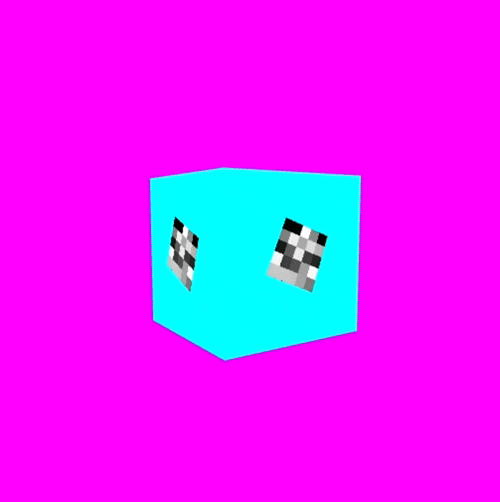p5Fbo is an extension to p5 that allows you to use framebuffer objects. Framebuffers allow us to do our rendering into a webGL texture instead of directly to the screen in a canvas.
This project is very much a work in progress.
The createGraphics() function is great, but it has some limitations. Every time you call createGraphics, p5 creates an entirely new canvas object, containing a new webGL context. Browsers limit the number of webGL contexts that you can have on a single page. If you try and create too many, the browser will remove the oldest ones. It likely varies by browser, but in my recent testing I hit the limit around 14.
Framebuffers allow us to get around this limitation. Now we can have as many offscreen buffers as we like, without the overhead of creating a new webGL context for each one.
Framebuffers are potentially faster as well. I haven't done any bench marking yet, but I have a hunch that using frame buffers will be much more performant than using createGraphics();.
Syntactically cleaner (imo). It's nice to not have to prefix all of your graphics calls with graphics..
Just add the p5.js library, as well as the p5Fbo.js library somewher in your html file.
<head>
<title>p5Fbo example</title>
<script language="javascript" type="text/javascript" src="../p5.js"></script>
<script language="javascript" type="text/javascript" src="../p5Fbo.js"></script>
<script language="javascript" type="text/javascript" src="sketch.js"></script>
</head>The best way to get started is probably to duplicate the example in this repo.
To use p5Fbo, just instantiate a new p5Fbo object in your setup function.
let fbo;
let shader;
void setup(){
const canvas = createCanvas(500, 500, WEBGL);
fbo = new p5Fbo({renderer: canvas, width: 500, height: 500});
// Lets load a shader as well.
shader = createShader(vertSrc, fragSrc)
}To do some drawing into the fbo you first need to call fbo.begin(). When you're done drawing, just call fbo.end(). If you've ever used fbo's in openFrameworks, this will be very familiar.
void draw(){
// activate our fbo
fbo.begin();
// Call clear at the beginning of each frame
clear();
// Do our drawing
background(0, 255, 0);
push();
rotateX(frameCount * 0.01);
fill(255, 0, 0);
box(100);
pop();
// We're done drawing into the fbo so call .end()
fbo.end();
// Now we need to draw the fbo to the screen.
fbo.draw();
}const fbo = new p5Fbo({renderer, width, height, interpolationMode, wrapMode});- renderer: The p5 renderer.
- For the base canvas, this will be what is returned from createCanvas.
const canvas = createGraphics(100, 100, WEBGL) - For p5.Graphics objects, this will be the
._rendererproperty returned from createGraphics.const graphics = createGraphics(100, 100, WEBGL);const renderer = graphics._renderer;
- For the base canvas, this will be what is returned from createCanvas.
- width: The width of the fbo render texture
- height: the height of the fbo render texture
- interpolationMode: (optional) either LINEAR or NEAREST. defaults to LINEAR
- wrapMode: (optional) either CLAMP, REPEAT, or MIRROR. defaults to CLAMP
- floatTexture: (optional) either true or false. defaults to false
Tells p5 to start rendering into the framebuffer. Call this before you before you want to use the fbo.
Tells p5 to stop rendering into the framebuffer. It's very important to remember to call this function, otherwise p5 will keep rendering into the framebuffer, and you'll get weird results on screen.
returns the p5.Texture that the framebuffer is rendering into.
Copies contents of one fbo to another.
Example: fboA.copyTo(fboB);.
A convenience method to draw the FBO to the screen at a given x, y, width, and height. This also flips the FBO vertically on the Y axis, to correct the inversion that FBO's do by default.
Draws the fbo to the screen at the same size as your canvas.
-
I haven't tested if this works with all of the custom camera functions. I think if you put the camera function calls after
fbo.begin()they may work. -
WebGL1 (which p5 uses) does not support multisampling, so your graphics may be a little more jagged than with default rendering. One solution is to render at 2x resolution, and then scale down when you draw. Or you can try to implement a post processing anti-aliasign shader like FXAA.
-
Fbo's render with the y axis flipped by default. When you go to draw the texture, you'll need to unflip it
scale(1, -1), unless you use the.draw()method in p5Fbo.
- Test all perspective and ortho camera functions
- Add a read to pixels function
I learned a lot about framebuffers from Gregg Tavares WebGL fundamentals series. It's worth checking out if you'd like to learn more.
